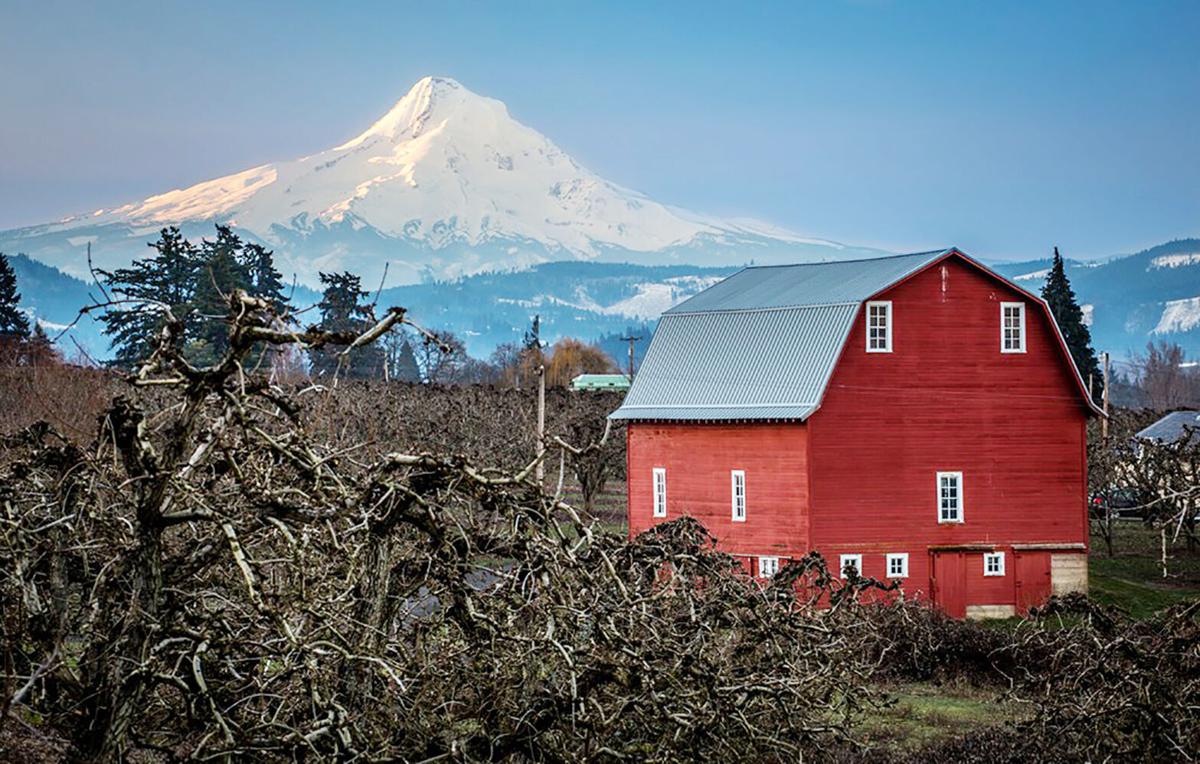This article was published on: 10/1/21 2:51 PM
This year’s Northwest pear crop looks to be bountiful, growers say, despite heat waves, drought and other challenges that plagued the region.
“We’ve got the cleanest pear crop that I’ve maybe ever seen,” said Brian Focht, manager of the Washington and Mid-Columbia Pear Marketing Associations in Wenatchee.
The Northwest pear harvest started early August in Medford, and will wrap up in early October in higher-elevation regions of Hood River and Washington’s upper Wenatchee Valley.
Bartletts are done; Anjous have a week or so left as of Wednesday,Sept. 29, and the Bosc harvest is underway.
Growers in Central Washington and the Mid-Columbia region say they’re pleased with this year’s crop and market outlook.
In contrast, Southern Oregon growers experienced water cuts and damaging heat waves, the exception to an overall good harvest for the region.
Because of heat and drought, pears are running smaller this year , but marketing experts say that’s not too concerning because domestic demand for bagged pears is increasing, and smaller pears are preferred for bags.
The Pear Bureau Northwest estimates the final crop will weigh in at 16.1 million standard box equivalents, approximately in line with the four-year average.
“It’s a good-sized crop,” said Kevin Moffitt, president and CEO of the Pear Bureau Northwest.
Shipments will ramp up mid-October and peak November through December.
Organic pears this year are forecast at 1.94 million standard boxes, 12% of the total crop.
“I think the organic category is still a growth opportunity,” said Moffitt.
Hood River’s plentiful harvest was in part due to good snowpack and overall water access.
”We were really lucky Hood River had water,” said Jon Laraway, a third-generation grower whose family’s farming roots run deeper than many fruit trees in the valley.
Growers in the upper Wenatchee Valley, a place locals revere as the world’s best microclimate for pear growing, say harvest is going well.
Southern Oregon growers, in contrast, suffered. July 19, Talent Irrigation District shut off canals, followed by Medford Irrigation District Aug. 1. These shutoffs, exacerbated by heat waves, meant smaller fruit.
Last year, the Medford region produced 432,120 boxes of pears, and this year, only 165,750 — a 62% decrease.
Mike Naumes, grower and president of Naumes Inc., left 600 acres of pears, about half the acreage, unpicked because fruit was too small.
”It was really rough,” said Naumes.
The labor shortage, a perennial challenge, also hurt the industry this year.
”I think (labor is) even worse this year,” said Moffitt, who estimated many operations across the Northwest are 10% to 20% short on staff.
Laraway, the Hood River grower, agreed there seemed to be fewer pickers available this year.
Despite challenges, pear growers appear hopeful about the market.
U.S. consumer demand for pears is rising during the pandemic, especially for bagged pears.
Exports this year are predicted to be roughly the same as in 2020. Last year, the U.S. exported 240.5 million pounds of fresh pears valued at $149.4 million.
Focht said he still expects “tough” export markets and jammed ports, but the industry is fortunate that Canada and Mexico are its primary export markets since those countries are easier to ship to than other regions.




